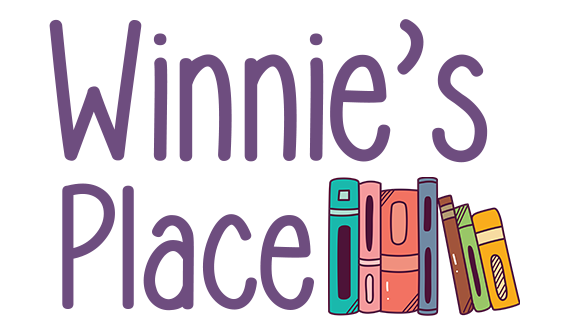5 Facts Parents Should Know About Reading

Reading is a skill that can’t be underestimated for child development. Not only does reading benefit a child’s overall education, but also their social skills and reasoning abilities. Because of these benefits, it’s no doubt parents want their children to grow up to be excited, confident readers.
While the prospect of a child reading is exciting for parents, the process of helping them develop this skill isn’t always simple. This is because there are so many factors at play when children begin the process of reading independently. Thankfully, there are five basic facts parents should know as they begin the ‘learning-to-read journey’ with their children. These reading facts can provide guidance, comfort, and confidence to parents who are just starting the process or are struggling to help their children gain self-assurance in reading.
1) Reading words is NOT a natural process!
Children develop many skills naturally, without much effort from parents or caregivers. Babies learn to sit up, stand, and walk quite organically. Even speech comes naturally; babies don’t have to attend a formal infant language academy in order to say their first words and sentences. Instead, they learn from being around family members and picking up on their vocabulary and speech patterns.
While speech is a natural process for children, reading is actually very different. In fact, reading is NOT a natural process at all. This may be surprising to some parents, especially since they are encouraged to consistently read to their children from birth. Of course, reading to children is very important and provides a whole host of benefits, but learning to read is very different from learning a first language. In short, just reading to a child will not teach a child to read.
Thankfully, there are ways that parents can intentionally assist their children in the process of learning to read. This doesn’t involve memorizing words or sentences in books, but instead focuses on decoding. Decoding helps children recognize and analyze printed words, then connect them to their spoken forms. When taught consistently and deliberately, decoding skills (also known as word-attack skills) greatly help children make sense of the words on a page, kick-starting the process of independent reading.
2) Children must understand that spoken words are made up of individual sounds.
Decoding is a process much like a puzzle. Children must learn to put several pieces together in order for written words to make sense. The first, and perhaps most foundational piece of the puzzle, is phonological awareness. This means children understand that spoken language is made up of several parts: words, syllables, and even individual sounds.
The individual sounds in a spoken language are called phonemes and they are an important decoding puzzle-piece. It’s vital that children learn to hear individual sounds in words because decoding involves the ability to match sounds to specific letters. This is called phonemic awareness and it is essential; research shows that the ability of preschool-aged children to identify sounds in words (like the last sound in rain is /n/) strongly predicts how they will succeed as independent readers.
Three important phonemic awareness skills for beginning readers are:
- the ability to segment word sounds, meaning that children can parse out the individual sounds within a single word (for example, what are the three sounds in the word “red”?);
- the ability to blend sounds, meaning that children can bring individual sounds together (for example, what word is /r/ /e/ /d/?);
- and the ability to manipulate individual sounds, helping children ultimately discover new words (for example, what word do I have if I switch /r/ in “red” to /b/?)
Of course, there is a developmental progression to teaching children phonological awareness. Practice through specific instruction, exposure, and activities will gradually help children develop this essential speech-sound awareness.
3) Written English is a complex code.
In the English language, letters of the alphabet are “pictures” of sounds. Consider this: the English alphabet has only 26 letters, yet the English language has approximately 44 sounds. This creates a complex written code where many letters do double-duty and represent multiple sounds. Additionally, combinations of letters make distinct sounds and there are even different ways to spell the same sound. For example, think about how many combinations of letters create the long e sound:
- e (as in me)
- ee (as in bee)
- e_e ( as in eve)
- ea (as in eagle)
- y (as in baby)
- ie (as in piece)
- ey (as in key)
That’s seven ways to create the same sound. Additionally, the letter combination ‘ea’ can represent a long e (as in bead), but also a short e (as in bread), and even a long a (as in great).
With all of these combinations of letters and sounds, developing readers can’t all be expected to pick up on this code naturally, nor can they be expected to learn it through practices like guessing at words or memorizing sight words. Its complexity means many children will need to be explicitly taught through a systematic approach to reading based on phonics (the process of associating sounds with letters or groups of letters).
4) It takes time to learn to read automatically and fluently.
Typically, children learn to read words between kindergarten and second grade. Because of this, it’s entirely appropriate to consider children within this range as beginning readers.
They are still figuring out how to put together the pieces of the decoding puzzle, so it’s important they are able to synthesize all of the new information. Beginning readers need time and practice to develop foundational skills in phonological awareness and phonics before they can take off as independent readers. Fluency will eventually come once they are given this time and practice.
5) It is never too late to learn to read!
Many children have reading difficulties, mostly because of a lack of phonemic understanding or difficulties with phonics. However, the majority of these children will respond well to proper reading instruction. Some children who receive this instruction may still lag, often due to a deficits in phonemic awareness. In fact, this is common for many children diagnosed with dyslexia. But even then, most of these children CAN and WILL make progress with focused reading intervention. This means it is never too late for children to become confident in and excited about reading!
It’s important for parents to understand that reading is not something their children will magically be able to do once they reach a certain age. Instead of focusing on sight word memorization, parents can help their children by considering ways to help them identify word sounds, focus on phonics, and provide them the time they need to process all of the components to reach reading independence.


